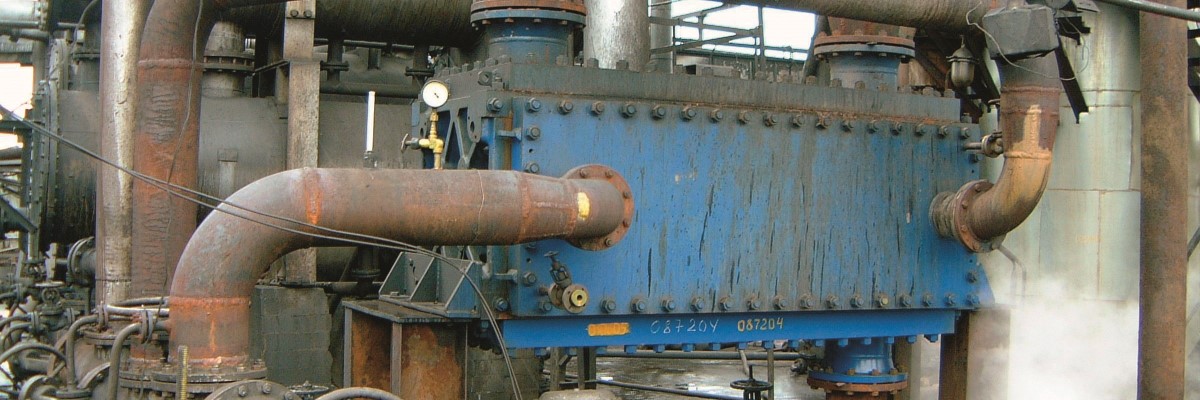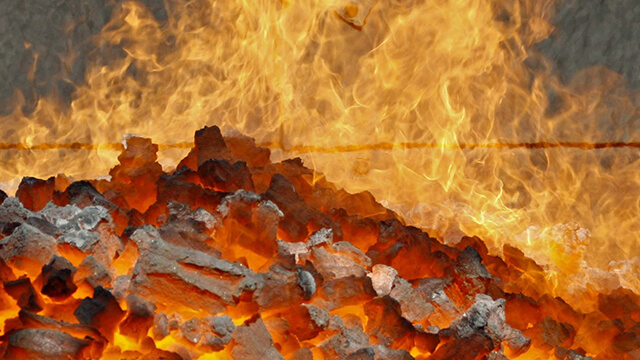Boosting preheating efficiency: how Alfa Laval Compabloc optimized light oil recovery at Avdeevka coke-oven plant
The Avdeevka Coke-oven by-product plant in Ukraine, one of Europe's largest coke-producing facilities, faced significant challenges in its light oil recovery section. With a daily treatment of 18,500 tons of coke and the production of 24 different by-products, the plant required an efficient and reliable solution to enhance its preheating process. Alfa Laval's Compabloc heat exchanger emerged as the ideal solution, significantly improving efficiency and reducing operational costs.
DATE 2025-06-24The challenge
In the light oil (BTX – Benzene, Toluene, and Xylene) recovery section, the plant used a scrubbing/stripping system to remove light oil from the coke oven gas (COG). The process involved spraying wash oil over the COG in a scrubbing tower, forming bensolized oil (BO). This BO was then heated in a stripping tower to recover the light oil, resulting in debensolized oil (DBO) that was recycled back to the scrubbing tower.
However, the existing heat exchanger used to preheat the BO before entering the stripping tower faced issues with high pressure drops, leading to significant pressure loss before the stripping tower. This inefficiency required additional preheating using a burner, consuming valuable COG and increasing operational costs.
Our solution
In 2003, Avdeevka plant management decided to replace the two large shell-and-tube (S&T) heat exchangers with a single compact, fully welded Compabloc heat exchanger. The Compabloc, designed to serve as a dephlegmator (partial condenser) for light oil recovery, addressed the pressure drop issue and enhanced preheating efficiency.
Process implementation
The implementation of the Compabloc heat exchanger was a strategic decision aimed at optimizing the light oil recovery process. The Compabloc replaced the two S&T heat exchangers, which had a combined surface area of over 400 m². The new heat exchanger successfully reduced the pressure drop before the stripping tower and increased the preheating temperature of the BO to 100°C.
Light oil recovery process using Alfa Laval spiral heat exchangers and Compabloc
A single Compabloc made it possible to save 100 m³ of COG per hour in the burner as the preheating efficiency was increased. The extraction of benzene from the wash oil is much more efficient, and we are now dismantling our two old S&T heat exchangers because we do not need them anymore.” - says Mr. S. Kaufman, Chief Engineer.
Impact and benefits
The introduction of the Compabloc heat exchanger brought several significant benefits to the Avdeevka plant:
- Efficiency: The preheating efficiency increased, allowing the BO to reach 100°C before entering the stripping tower.
- Cost savings: The plant saved 100 m³ of COG per hour, reducing fuel consumption and operational costs.
- Process optimization: The extraction of benzene from the wash oil became more efficient, enhancing the overall light oil recovery process.
- Space and maintenance: The compact design of the Compabloc allowed for the dismantling of the two large S&T heat exchangers, freeing up space and reducing maintenance requirements.
Alfa Laval and Avdeevka have continued to collaborate on optimizing various processes within the COG plant. In addition to the Compabloc, two spiral heat exchangers were installed in 2001 to replace eight S&T heat exchangers, and a spiral column was installed as the final coke oven gas cooler. Plate heat exchangers of various sizes and materials are also used in different positions throughout the plant.
Download
The compact, fully welded Compabloc heat exchanger is designed to operate with a wide range of aggressive media and at high temperatures and pressures.
Key facts
Design temperature
400°C (752°F), down to -100 °C (-148°F)
Design pressure
From full vacuum to 42 barg (600 psig)
Maximum heat transfer area
840 m2 (8,985 ft2)
Material of construction
316L, SMO254, 904L (UB6), Titanium, C-276/C-22/C-2000


